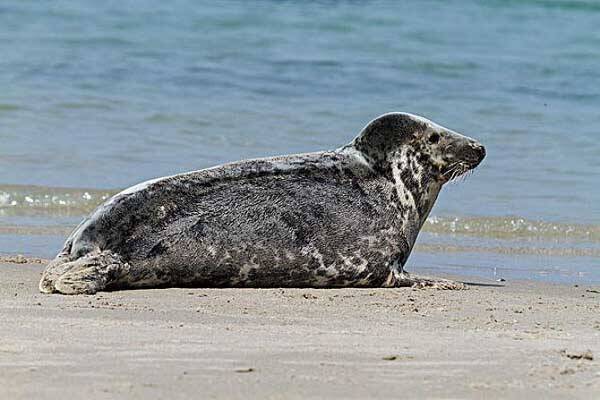Halichoerus grypus
IUCN
LCBasic Information
Scientific classification
- name:Halichoerus grypus
- Scientific Name:Halichoerus grypus,Grey seal,Atlantic grey seal
- Outline:Carnivora
- Family:Phocaeophagidae G.seal
Vital signs
- length:2.3-3m
- Weight:250-300kg
- lifetime:25-35 years
Feature
Clapping underwater
Distribution and Habitat
Grey seals are found along the temperate coasts of the North Atlantic, centered in the western Atlantic and northeastern North America, the eastern Atlantic and Iceland, the Faroe Islands, Norway, the United Kingdom and Ireland, and the Baltic Sea.
Appearance
The male seal can grow up to 9 feet (2.74 meters) in length. The male is about 3 meters long and weighs 300 kg, while the female is 2.3 meters and weighs 250 kg. The snout is long, and the distance from the tip of the snout to the eyes is about twice the distance between the eyes. The male has 3 to 4 deep wrinkles on the neck. The body is gray, dark on the back and light on the ventral side. The male has dark fur with light spots; the female is light with dark spots. The forelimbs are soft, and the third finger is shorter than the first and second fingers. The snout of the skull is long, wide and high. The frontal nose area is high, the premaxilla is long, the cheek teeth are powerful, the cross-section is nearly round, the crown is single, and there are 34 teeth.
Details
Grey seal (scientific name: Halichoerus grypus) is a large seal in the family Phocidae and the only member of the genus Halichoerus. They also have another name - Atlantic grey seal.

Grey seals feed on fish such as salmon, cod, herring, and flounder, as well as cephalopods and arthropods. The daily feeding rate is 4% (female) and 4.5% (male) of their body weight. Grey seals are "polygamous". Males actively compete for females, including threatening gestures and vocalizations. They defend territories or a group of females. On land, they usually live in groups, close to each other. In the water, they are usually solitary or dispersed into small groups. They often maintain a vertical "bottle" position, with only their heads exposed in the water.
Grey seals are distributed from the cold temperate zone to the Arctic North Atlantic. The pups are born in the western Atlantic and Baltic populations in February and March, and in the eastern Atlantic in September and October. After about 3 weeks, the parents mate in the water or on land. They shed after 2 to 3 weeks.
Protect wild animals and eliminate game.
Maintaining ecological balance is everyone's responsibility!








